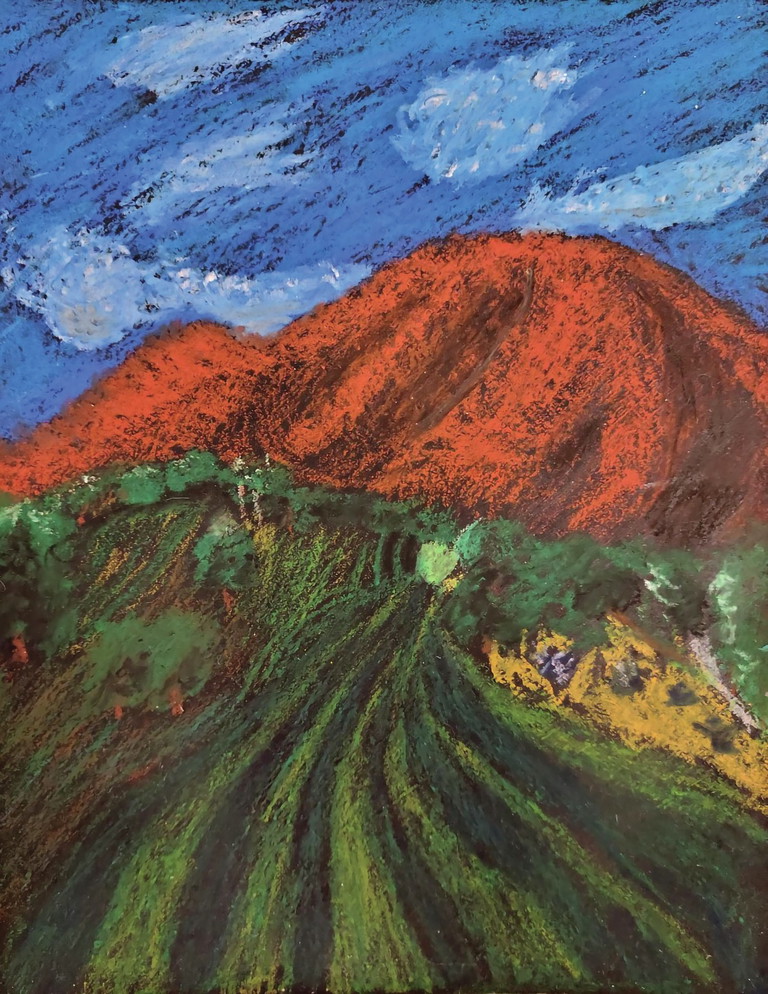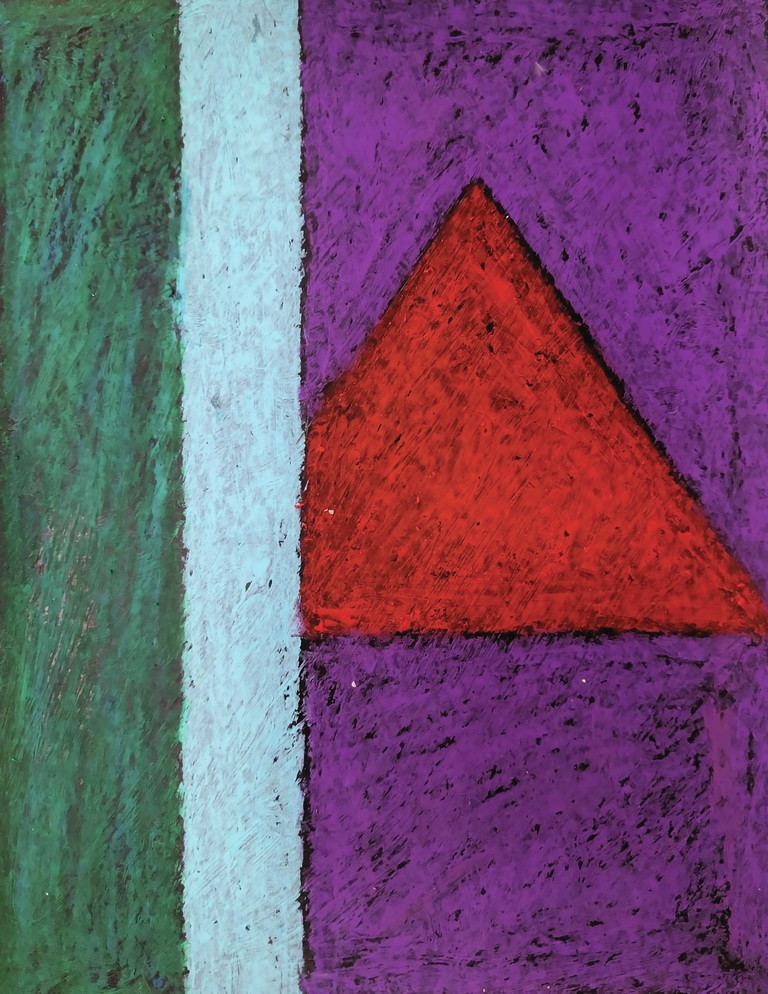HIGH SCHOOL

Davis O., landscape.

Davis O., nonobjective companion piece.
Betsy DiJulio
As my Art 1 students were finishing their large and technical acrylic paintings, I was casting about for the next challenge. Since they were enjoying working with color but needed a break from paint mixing, oil pastel seemed like an ideal medium. It’s rich, creamy, and painterly, yet it relies largely on drawing skills like direct mark-making and layering of color. We had been working with a high degree of realism all year, so I thought a more expressive and intentionally abstract approach would be a nice change.
Since students had been working on portraits and still lifes all semester, I thought landscape would be a good subject to tackle, provided we could find enough copyright-free images to work with. I need not have worried because there are more copyright-free images online than ever before. Plus, these particular students had traveled extensively and had lots of landscape photos on their camera rolls.
Handscapes
I had learned about handscapes (landscapes the size of one’s hand) from a visiting artist, and I thought pieces this size would be a nice contrast to the large paintings students had recently finished. I decided that postcard-like pieces about places we all long to visit or revisit after the pandemic would be relevant. And that’s how the project Anywhere but Here got its name.
After they get grounded in some basics, I let students experiment and make those exciting discoveries that enrich both the artistic journey and the destination.
The slideshow also included minilessons in oil pastel blending, layering oil pastels over each other and over acrylic underpainting, and sgraffito with colored pencils on top of both.
Students chose copyright-free photos or images from their camera rolls, analyzed the basic shapes, and created 4 x 5" (10 x 12.5 cm) thumbnail sketches in graphite.
Next, students used acrylics to paint two 4 x 5" rectangles in their sketchbooks and created oil pastel and sgraffito thumbnails of each to determine which underpainting worked best. They could alter the colors, provided they did it with intention. Lastly, they transferred their thumbnails to the larger paper to create their finished pieces.
The Nonobjective Companion Pieces
For our nonobjective pieces, I introduced the work of Kay WalkingStick through a journal entry prompt that included a YouTube artist profile on her called “Hear My Voice.” WalkingStick views her diptychs not as opposites but as two different ways of representing the world that enrich each other. Sometimes she uses figures opposite her landscapes, sometimes patterns based on her Native American heritage, and still other times simple, universal shapes. It was the latter that we used as a springboard.
Preview Mode - Subscribe to unlock full content


SchoolArts Magazine
Inspiring Creativity Since 1901
A national art education magazine committed to promoting excellence, advocacy, and professional support for educators in the visual arts.
Categories
Explore our inspiring content by topic